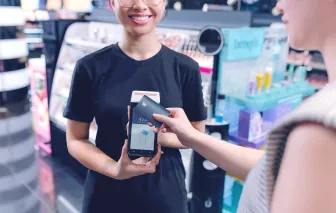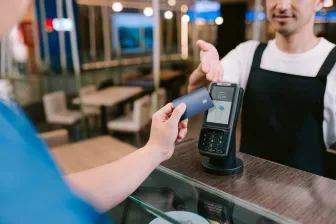Today’s digital-first consumers expect the same conveniences in-store that they have online –and merchants, acquirers, and solutions providers that enable them will remain relevant in their markets.
Consumers have always wanted the most convenient, personalized, and enjoyable experiences possible. After a few years of shopping on digital channels, they now look for the same access to data and personalization in-store that they do with e-commerce. Brick-and-mortar merchants that deliver an “online experience” can positively impact their bottom lines. PwC research found that if consumers find in-store shopping less enjoyable than e-commerce, 51 percent will be less loyal to that retailer. Moreover, that statistic increases to 69 percent for Gen Z consumers.
Creating the Online Experience In-Store
With customer loyalty and revenues on the line, adapting processes and crafting new shopping journeys need to be at the top of brick-and-mortar retailers’ priority lists in 2023, paying special attention to these four areas:
- Instant Access to Information
A key advantage of online shopping is that it satisfies consumers’ demand for instant gratification. A shopper wants to know immediately if a product, model, size, style, or color is available, they type a query, and they get the answer. To replicate this ability in-store, retailers can deploy self-service kiosks or interactive digital signage to deliver information quickly. This process can be automated by placing RFID tags that trigger messages, special offers, and coupons to provide an incentive to complete purchases.
Mobile point of sale (POS) solutions can also be powerful tools, putting information at a sales associate’s fingertips wherever they’re working in the store. With mobile POS, employees do not need to spend time finding the information the customer needs by going to a terminal or the back office. Instead, they can instantly access inventory data, item availability, pricing, and other relevant data, so customers never need to wait for the information they need to make purchasing decisions.
- Personalized Service
A major advantage of e-commerce is the personalized service it provides. Platforms collect data on each customer, and when they return, the solution can use that data to make relevant offers, highlight products customers are most likely interested in, and provide easy access to information about each shopper’s orders and accounts. Brick-and-mortar retailers can create similar experiences by using customer purchase histories and other analyses to demonstrate that they recognize customers, understand their preferences, and make relevant upsell or cross-sell offers.
- Customer Autonomy
Shopping in a physical store has historically been high-touch. However, E-commerce has proven that many consumers prefer to shop without dependence on store employees. In fact, data shows that a majority of younger customers prefer this way of doing business. For example, according to new research from Vita Mojo, 84 percent of Gen Z and 82 percent of millennials choose restaurants with self-service kiosks over those that don’t have them.
While not all shoppers will want little-to-no interaction with sales associates or cashiers, forward-thinking retailers will give their customers this choice with in-store technology that allows them to find information and complete purchases themselves.
- Payments Choice
The online experience is tailored to payment flexibility. It is relatively easy for e-commerce merchants to offer alternative payment options like buy now, pay later (BNPL), automated clearing house (ACH), or peer-to-peer (P2P) payments. However, providing diverse payment choices in-store hasn't been easy.
Fortunately, innovators are finding ways to expand payment choices at the terminal, such as a cloud-based and API-driven Payment Platform as a Service approach that allows merchants to create the payment experiences their customers demand.
The Key To Relevance
Merchants that meet consumer demand for an online experience in-store will be the most competitive, now and in the future. How well a store delivers the convenience and personalized service customers are accustomed to online will differentiate winners from losers in retail markets, impacting customer loyalty and revenues. Additionally, acquirers and solutions providers delivering technology that make online experiences will also enjoy continued relevance to merchants seeking to meet today’s digital consumer demands.










